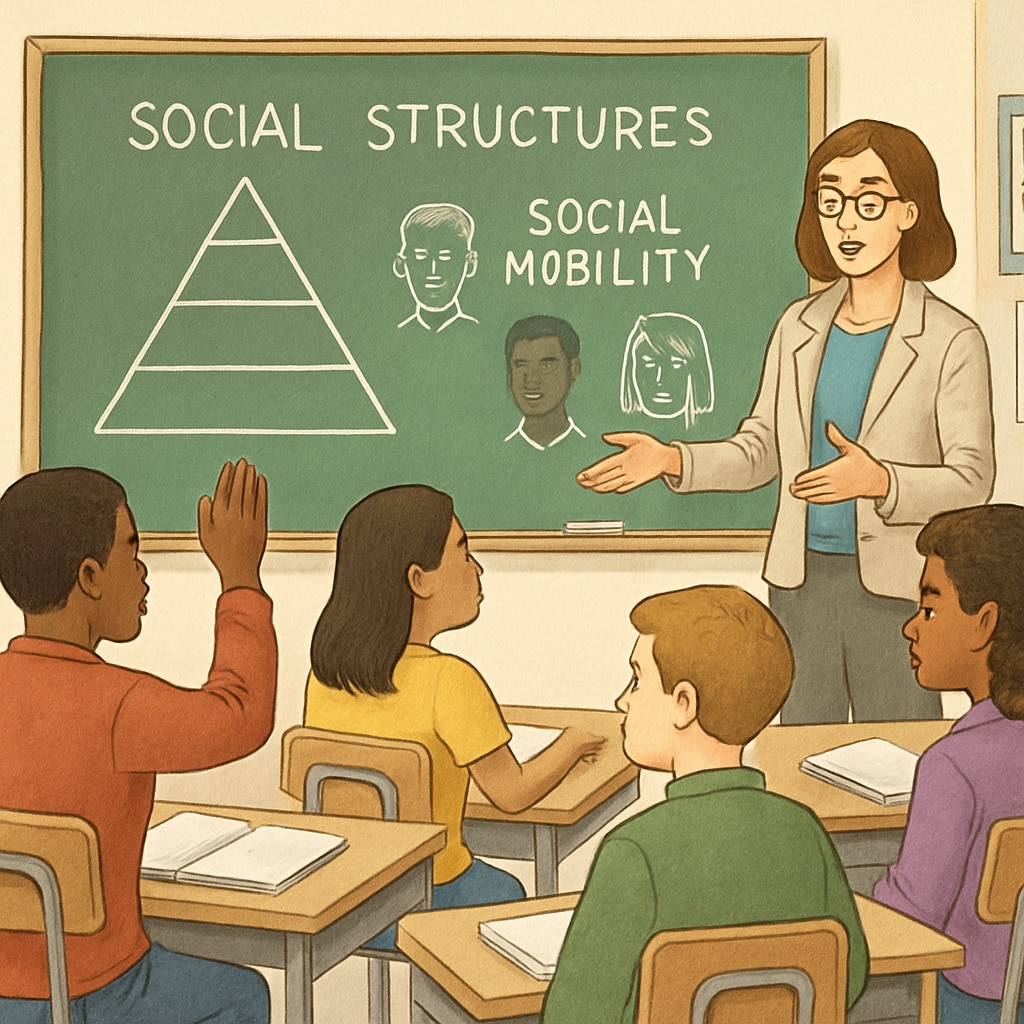In the realm of school education, textbooks play a pivotal role in shaping young minds. However, recent concerns have arisen about how 6th-grade social studies textbooks address the subjects of “class systems” and “social mobility.” Specifically, some versions of these textbooks describe social classes as “rigid and unchangeable,” a narrative that has sparked heated debates. Such descriptions raise questions about the biases inherent in school education and their influence on how students perceive the world they live in.
While the intention of these textbooks may be to teach historical or sociological concepts, oversimplified statements can inadvertently create a distorted understanding of society. This article will delve into the implications of portraying class systems as fixed, explore the potential harm such portrayals can have on students, and discuss the broader role of education in shaping societal narratives.
Understanding Class Systems and Social Mobility
Class systems refer to the hierarchical structures within a society, often based on factors such as wealth, occupation, or social status. Social mobility, on the other hand, is the ability of individuals or groups to move between these classes over time. While some historical class systems, such as the caste system in certain cultures, were indeed rigid, modern societies often emphasize the possibility of upward mobility through education, hard work, and opportunity.
However, when school textbooks depict class systems as entirely “unchangeable,” they risk ignoring the complexities of modern social dynamics. For example, students might come to believe that their socioeconomic backgrounds permanently define their futures, discouraging aspirations and efforts to improve their circumstances. This oversimplification is not just inaccurate but also harmful.

The Impact of Textbook Narratives on Student Worldviews
Educational materials have a profound impact on shaping children’s perspectives, particularly during their formative years. When 6th-grade students encounter statements suggesting that class systems are rigid, it may inadvertently instill a sense of fatalism. This mindset can lead to reduced motivation among students from lower socioeconomic backgrounds, as they may feel that their efforts to succeed are futile.
Moreover, such narratives can perpetuate stereotypes about social classes. For instance, students from privileged backgrounds might internalize the idea that their success is preordained, while those from underprivileged backgrounds may develop a sense of inferiority. As a result, this one-dimensional approach to teaching class systems undermines the broader educational goal of promoting critical thinking and social equity.
According to a study by the Encyclopedia Britannica, social class is a multifaceted concept influenced by various factors, including education, economic policies, and cultural values. Ignoring these nuances in educational content can lead to incomplete or biased perceptions among students.

Rethinking the Role of Schools in Teaching Social Structures
To address these concerns, educators and policymakers must adopt a more balanced approach to teaching social systems. Instead of presenting class as an unalterable construct, textbooks should highlight the historical and cultural contexts of class systems while emphasizing the potential for social mobility in contemporary society.
Here are some strategies to achieve this:
- Incorporate diverse perspectives: Textbooks should include examples of individuals or groups who have successfully achieved upward mobility, inspiring students to believe in their potential.
- Encourage critical thinking: Lessons should challenge students to analyze and question societal structures, fostering a deeper understanding of the factors influencing class dynamics.
- Collaborate with experts: Sociologists and educators should work together to ensure that educational content reflects the complexities of social structures accurately.
By adopting these measures, schools can create a more inclusive and empowering educational environment that encourages students to see themselves as agents of change rather than passive participants in predetermined systems.
Conclusion: The Need for Balanced Narratives
The way we educate children about societal structures has far-reaching implications. Textbooks that portray class systems as rigid and unchangeable risk perpetuating harmful stereotypes and limiting students’ aspirations. Instead, education should inspire students to question societal norms, seek opportunities for growth, and contribute to a more equitable world.
As we continue to evolve as a society, it is crucial to ensure that our educational materials reflect not only historical realities but also the possibilities of the present and future. Only then can we equip the next generation with the tools they need to navigate and reshape the world around them.
Readability guidance: This article uses concise paragraphs, incorporates lists for clarity, and ensures a logical flow of ideas. Efforts were made to minimize passive voice and maintain an engaging tone while adhering to academic standards.


